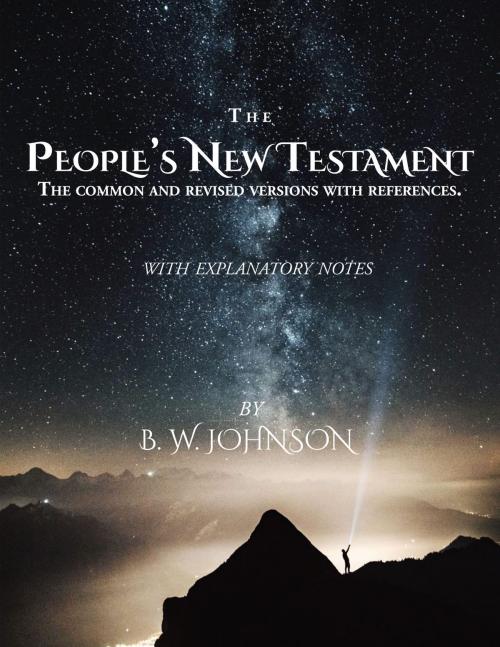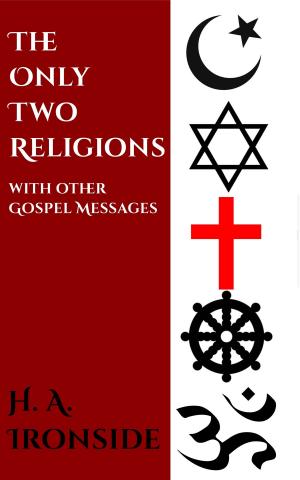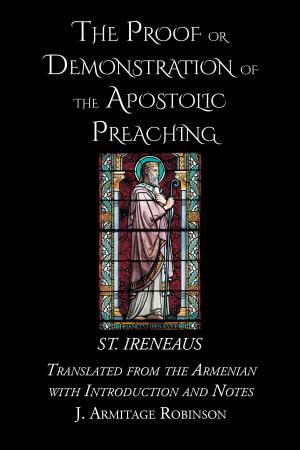The People's New Testament
The Common and Revised Versions with References and Explanatory Notes
Nonfiction, Religion & Spirituality, Bible & Bible Studies, New Testament, Study, Christianity| Author: | B. W. Johnson | ISBN: | 1230001930467 |
| Publisher: | CrossReach Publications | Publication: | September 24, 2017 |
| Imprint: | Language: | English |
| Author: | B. W. Johnson |
| ISBN: | 1230001930467 |
| Publisher: | CrossReach Publications |
| Publication: | September 24, 2017 |
| Imprint: | |
| Language: | English |
This work has been prepared, not especially for the learned and critical class, but for the people. The aim is indicated by the title. It has been a cherished purpose to prepare a People’s New Testament, with such aids as would enable the common reader to arrive at an understanding of every portion of the sacred message. If the Bible is God’s message to the common people, the most important object that piety and learning can propose is to put that message in their hands in such a shape and with such aids that the ordinary reader can understand it readily. That message was first given thousands of years ago, in far away lands, to men of strange languages and customs. In the shape in which it was originally recorded no one of only common English education could understand it. If one were to demand the Scriptures as given by the sacred writers, he would receive them in strange characters and unknown tongues of which he could not understand a word or a letter. It is needful for his use that they be translated out of the original tongues and printed in his own vernacular. In order to understand them it is not only necessary that he have the aid of a translation, but even when this is done he will find much that is obscure or hard to understand. There are allusions to the customs of the times and countries in which the Scriptures were written, to the history of Israel and surrounding nations, to the geography of Palestine and other Bible countries, to men of prominence in secular history, and to various matters which must be understood if we would have a clear meaning of the sacred text. Without this understanding the reader moves through a maze of obscurity. Often, too, the meaning of passages of Scripture can only be determined by comparison with other passages. Hence, in order to a clear view of the meaning of the sacred record, not only is there need of the aid of translation, but of a library of Bible Dictionaries, Sacred Geographies, Concordances, etc., unless the result of study of these latter works is condensed in brief explanatory notes on all difficult passages.
This work has been prepared, not especially for the learned and critical class, but for the people. The aim is indicated by the title. It has been a cherished purpose to prepare a People’s New Testament, with such aids as would enable the common reader to arrive at an understanding of every portion of the sacred message. If the Bible is God’s message to the common people, the most important object that piety and learning can propose is to put that message in their hands in such a shape and with such aids that the ordinary reader can understand it readily. That message was first given thousands of years ago, in far away lands, to men of strange languages and customs. In the shape in which it was originally recorded no one of only common English education could understand it. If one were to demand the Scriptures as given by the sacred writers, he would receive them in strange characters and unknown tongues of which he could not understand a word or a letter. It is needful for his use that they be translated out of the original tongues and printed in his own vernacular. In order to understand them it is not only necessary that he have the aid of a translation, but even when this is done he will find much that is obscure or hard to understand. There are allusions to the customs of the times and countries in which the Scriptures were written, to the history of Israel and surrounding nations, to the geography of Palestine and other Bible countries, to men of prominence in secular history, and to various matters which must be understood if we would have a clear meaning of the sacred text. Without this understanding the reader moves through a maze of obscurity. Often, too, the meaning of passages of Scripture can only be determined by comparison with other passages. Hence, in order to a clear view of the meaning of the sacred record, not only is there need of the aid of translation, but of a library of Bible Dictionaries, Sacred Geographies, Concordances, etc., unless the result of study of these latter works is condensed in brief explanatory notes on all difficult passages.















